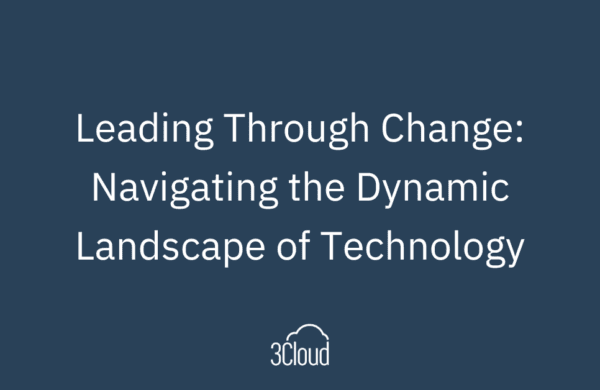People often look at sales as a numbers game – more meetings, more calls and more effort means more sales, right? Unfortunately, not always. But there is a more efficient way to build success. If we evaluate and prioritize our pipeline, we can identify clients that we are best positioned to help.
In this digital age, effective use of data and analytics can redefine the way we think about the sales numbers game. Instead of doing more – with less effective methods – using both historical and predictive data can help your organization decrease the frequency of its calls, meetings and presentations, while winning more opportunities and satisfying more clients.
Getting Real with Value-based Relationships
In working with sales data and systems across many industries, we have found there are ways to improve efficiencies in the sales process, because, as they say, “time is money.” Often, too much time is spent on prospects that don’t have potential for high long-term value. Using data and analytics, companies can uncover insights to more accurately target high-value opportunities that are also ideal for the business.
Authors Mahan Khalsa and Randy Illig call these high-value opportunities “value-based relationships” in their book “Let’s Get Real or Let’s Not Play – Transforming the Buyer/Seller Relationship.” The notion of value-based relationships disputes the ‘do more to achieve more’ mentality. The most rewarding relationships for you and your company are those with long-term value. Mastering metrics that drive both long-term value and fit can help your organization invest its efforts in the right areas. In other words, sales and marketing can finally become more science than art.
Determine Customer Lifetime Value
We can use historic data from our pipeline to determine Customer Lifetime Value (CLV). Amy Gallo defines this concept in Harvard Business Review’s “How Valuable Are Your Customers?” She explains it as the amount of profit your company can expect to generate from a customer for the time the person (or company) remains with you (e.g., x number of years). At its core, CLV is the present value of all future streams of profits that a customer generates over the life of the relationship with your firm.
Since we have data on existing accounts, we can start to establish CLV by examining historic data. What are the past wins and losses? What is the average size of those transactions, including minimum and maximum deal size?
Writing for “Entrepreneur,” ActionCOACH founder Brad Sugars recommends estimating lifetime value by plugging actual or estimated (if you’re in the planning stages or just starting out) numbers into the following equation:
(Average Value of a Sale) x (Number of Repeat Transactions) x (Average Retention) – (Acquisition Cost)
An important step in this process is to include the acquisition cost – the cost you’re willing to spend per customer knowing that you’ll take a loss on an initial project.
Assess Customer Fit
From there, evaluate customer relationship sustainability. Examine the potential customer’s long-term vision and your ability to help them meet that goal with your products or services. Is it a customer your company will provide value to for months, or years? For service-based firms, is it an engagement that will keep your team interested and motivated to deliver value?
Then, determine how the customer fits within your organization’s culture. Cultural compatibility means the client shares your values in working together. This can encompass how team members will work together, how decisions are made, and how work gets done daily.
Are tasks and activities tangible, or intangible? Respectful work environments, including team members and their attitudes, can be intangible, while workflows and processes are tangible. Considerate work environments and attitudes include the willingness to share necessary information and embrace flexibility to achieve a common goal. For example, is value placed on the result, or on micromanaging tasks? Culture also includes interpersonal communication – open dialogue can lead to high-performing teams, while a lack of it creates roadblocks. Albeit intangible, this can be scored.
Align Vision, Needs and Experience
Long-term vision is vital in determining client fit and creating high lifetime value. As described in the aforementioned “Let’s Get Real or Let’s Not Play,” Khalsa and Illig champion the concept of starting with the end in mind. That means understanding how an opportunity can ultimately impact your customer’s business, and yours. It means looking past the initial sale and assessing the likelihood of future revenue and alignment of vision and needs.
Determining suitable opportunities requires clearly aligning expectations, capabilities and experience. A well-defined beginning and end with clear expectations helps mitigate risk. Consider the customer’s specific needs and your company’s capabilities and experience in meeting those needs. If it is a new product or service, there is high risk of failing the customer. These opportunities should be given a lower rating in your pipeline. A product or service that has been delivered to multiple customers has a much greater chance of success, and should be scored with a high rating.
Aligning needs and experience is a crucial step in determining which opportunities deserve the most attention. Let the data do the work.
Transform Your Pipeline
As we at BlueGranite have implemented this process, we have found that lifetime value, customer fit, and alignment of needs can be quantified to create an overall score for each pipeline opportunity, and ultimately your accounts. Keeping your pipeline “real” using data and analytics can help you beat the sales numbers game and focus your efforts where you will reap the most reward.
Questions or comments? Please contact us today.





